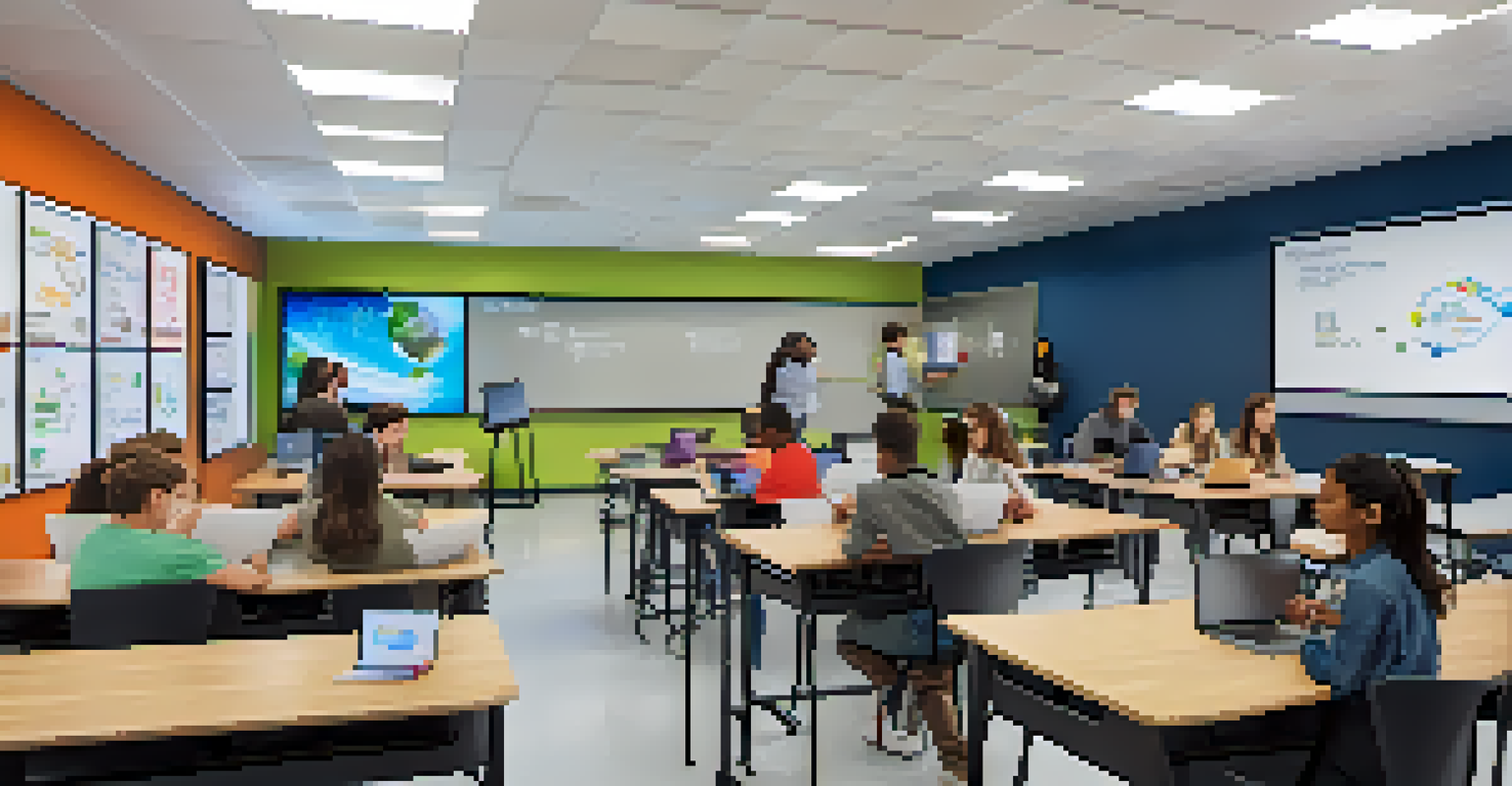Designing Effective Peer Learning Experiences for Students

Understanding the Importance of Peer Learning
Peer learning is more than just studying together; it's a dynamic process where students learn from each other. This approach not only enhances knowledge retention but also builds critical social skills. For instance, when students explain concepts to one another, they deepen their own understanding while fostering a collaborative spirit.
Learning is not a spectator sport. Students do not learn much just by sitting in classes listening to teachers, memorizing prepackaged assignments, and spitting out answers. They must talk about what they are learning, write about it, and relate it to past experiences.
Research shows that peer learning can lead to improved academic performance, as it encourages active participation and accountability. Students often feel more comfortable asking questions among peers, which can lead to a richer learning experience. By sharing diverse perspectives, learners can tackle complex problems more effectively.
Additionally, peer learning helps create a sense of community within the classroom. When students work together, they develop relationships that can enhance their overall educational experience. This supportive environment can boost confidence and motivation, making learning more enjoyable.
Setting Clear Learning Objectives
To design effective peer learning experiences, it’s crucial to start with clear learning objectives. These objectives guide the activities and ensure that students understand what they are supposed to achieve. For example, if the goal is to master a specific math concept, all peer activities should align with this focus.

Having well-defined objectives also allows students to gauge their progress and success. When they know what they are aiming for, they are more likely to engage meaningfully in the learning process. This clarity helps to keep discussions on track and encourages accountability among peers.
Peer Learning Boosts Engagement
Peer learning enhances knowledge retention and builds critical social skills through collaboration and active participation.
Moreover, clear objectives can inform the structure of the peer learning activities. Whether it’s group projects, study sessions, or peer teaching, each format can be tailored to meet the learning goals. This intentionality enhances the effectiveness of the peer learning experience.
Creating Diverse Learning Groups
Diversity in peer learning groups can significantly enrich the educational experience. By mixing students with different skill levels, backgrounds, and perspectives, you create an environment ripe for collaboration and innovation. For instance, a group with various strengths can tackle challenges from multiple angles.
The only way to learn mathematics is to do mathematics.
Additionally, diverse groups foster empathy and understanding among students. When learners interact with peers who have different viewpoints, they are encouraged to think critically and expand their horizons. This exposure can lead to more profound discussions and better problem-solving strategies.
To form these groups effectively, consider using tools like learning style assessments or interest inventories. These approaches help match students in ways that promote balance and inclusivity. This thoughtful grouping can enhance engagement and make peer learning more impactful.
Designing Structured Activities and Tasks
Structured activities are essential for guiding peer learning effectively. Providing specific tasks or roles helps students know what is expected of them and minimizes confusion. For example, assigning roles like facilitator, note-taker, or presenter can help manage group dynamics and ensure everyone contributes.
These activities should encourage collaboration while also allowing individual accountability. For instance, group projects can include peer evaluations to ensure each member participates actively. This not only promotes teamwork but also helps students reflect on their contributions.
Clear Objectives Drive Success
Setting clear learning objectives ensures students understand their goals, fostering meaningful engagement in peer activities.
In addition, incorporating a variety of tasks can cater to different learning styles. Whether through discussions, hands-on projects, or digital presentations, offering diverse options keeps students engaged and motivated. This variety can lead to a richer learning experience and reinforce key concepts.
Encouraging Reflection and Feedback
Reflection and feedback are vital components of effective peer learning experiences. Encouraging students to think about what they learned and how they collaborated can deepen their understanding. Simple prompts like, 'What went well?' or 'What could improve?' can spark meaningful conversations.
Moreover, peer feedback fosters a culture of open communication and continuous improvement. When students provide constructive feedback to one another, they develop critical thinking and communication skills. It’s also an opportunity for them to learn how to give and receive feedback gracefully.
Incorporating reflection activities, like journals or group discussions, can help solidify learning outcomes. This practice not only reinforces knowledge but also allows students to track their personal growth over time. It’s a win-win for both individual and group learning.
Utilizing Technology to Enhance Collaboration
In today’s digital age, technology can significantly enhance peer learning experiences. Tools like collaborative platforms, discussion forums, and educational apps can facilitate communication and organization among students. For example, using platforms like Google Docs allows students to work together in real-time, regardless of location.
Technology also offers opportunities for students to engage in peer learning beyond the classroom. Virtual study groups or online mentorship programs can connect learners with peers from different backgrounds and experiences, broadening their perspectives. This accessibility can make learning more flexible and inclusive.
Diversity Enriches Learning Groups
Creating diverse peer learning groups fosters empathy and critical thinking by exposing students to different perspectives.
Furthermore, integrating technology can cater to various learning preferences. Visual learners may benefit from video tutorials, while auditory learners might prefer podcasts or discussion boards. By leveraging these tools, educators can create a more engaging and supportive learning environment.
Measuring Success and Improving Practices
To ensure the effectiveness of peer learning experiences, it’s essential to measure success. This can be done through assessments, surveys, or informal feedback sessions. By understanding what works and what doesn’t, educators can refine their approaches to better meet student needs.
Tracking student progress and engagement can provide valuable insights into the impact of peer learning. For instance, if students demonstrate improved grades or increased participation in discussions, it’s a good indication that the approach is effective. This data can also guide future group formations and activity designs.

Additionally, fostering a culture of continuous improvement encourages both educators and students to adapt. Regularly revisiting goals and strategies ensures that peer learning remains relevant and impactful. This commitment to growth can lead to a vibrant learning environment that benefits everyone involved.